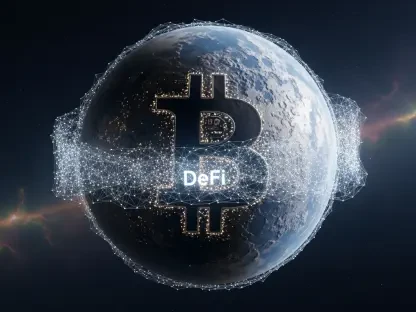Setting the Stage: Stablecoins Reshaping Digital Finance
In the fast-evolving landscape of decentralized finance (DeFi), stablecoins have emerged as a critical force, commanding a market capitalization exceeding $150 billion globally, and among these, USD1, developed by World Liberty Financial (WLFI), stands out as a rapidly growing contender with a market cap of approximately $2.68 billion. The announcement of its launch on the Aptos blockchain on October 6 has sparked significant interest among investors and industry observers. This integration not only marks USD1’s debut on a Move-based blockchain but also positions Aptos as a rising player in the competitive stablecoin arena.
This market analysis aims to dissect the implications of this strategic move, focusing on how it reflects broader trends in blockchain interoperability and scalability. By examining the current state of the stablecoin market, the unique advantages of Aptos, and the potential impact on DeFi ecosystems, the goal is to provide actionable insights for stakeholders. The significance of this development lies in its potential to redefine transaction efficiency and user accessibility in digital finance.
Understanding the dynamics at play requires a deep dive into data-driven trends and projections. This analysis will explore how USD1’s expansion aligns with market demands, assess Aptos’ competitive positioning, and forecast the long-term implications for both entities. As stablecoins continue to bridge the gap between traditional and digital economies, this launch serves as a pivotal case study for future innovations.
Deep Dive into Market Trends and Projections
Stablecoin Growth: USD1’s Multi-Chain Strategy
Stablecoins have solidified their role as a cornerstone of the crypto economy, providing stability amid volatile market conditions. USD1 has capitalized on this demand, achieving remarkable growth since its inception. With 79.3% of its supply deployed on the Binance Smart Chain (BNB Chain), alongside a notable presence on Ethereum (12.16%), Solana (6.53%), and Tron (2%), USD1 demonstrates a robust multi-chain approach. This strategy ensures broader reach and mitigates risks associated with network-specific challenges like congestion or high fees.
The decision to integrate with Aptos reflects a calculated move to tap into a high-performance blockchain known for low transaction costs and rapid processing. Market data indicates that stablecoin transactions are increasingly shifting toward platforms that prioritize scalability, with networks like Aptos gaining traction despite a modest 0.35% stablecoin market share. Projections suggest that if USD1 captures even a fraction of Aptos’ potential user base, it could drive significant volume, potentially increasing monthly trading figures beyond the current $60 billion.
This expansion also aligns with a broader industry trend of interoperability, where stablecoins aim to operate seamlessly across diverse ecosystems. As DeFi applications scale, the ability to move assets efficiently between blockchains becomes paramount. USD1’s latest move positions it favorably in this race, likely influencing other stablecoins to explore similar integrations over the next few years, from 2025 to 2027.
Aptos’ Competitive Edge: A Niche in Speed and Cost
Aptos stands out in the crowded blockchain market due to its technical architecture, built on the Move programming language. This design enables high throughput and low latency, processing thousands of transactions per second at minimal cost compared to giants like Ethereum, where gas fees often deter smaller transactions. For stablecoins like USD1, which rely on frequent, low-value transfers for payments and DeFi operations, Aptos offers an attractive environment.
However, challenges persist in Aptos’ path to dominance. Despite its technological prowess, the network lags in user adoption, with a relatively small share of the stablecoin market. Competitors such as Tether (USDT) and USD Coin (USDC) already have a foothold on Aptos, creating a crowded space for new entrants. Market analysis suggests that USD1’s arrival could act as a catalyst, boosting visibility and attracting developers to build complementary tools, yet sustained growth will depend on overcoming entrenched competition.
Looking ahead, Aptos’ focus on efficiency could carve out a niche among cost-conscious users and DeFi protocols. If the network leverages USD1’s integration to enhance liquidity—potentially through partnerships with exchanges like OKX and Gate Group—its market share could see incremental gains. Industry forecasts point to a gradual uptick in adoption, provided security and scalability concerns are addressed proactively.
DeFi Synergies: Unlocking Liquidity and Innovation
The integration of USD1 with Aptos opens new avenues within the DeFi sector, a market projected to grow exponentially as more users seek decentralized financial services. Aptos hosts several promising protocols, including Echelon Market, Hyperion, Thala Labs, Panora Exchange, and Tapp Exchange, which facilitate trading, lending, and liquidity provision. USD1’s presence on these platforms can enhance their utility by providing a stable medium for transactions and yield-generating activities.
Comparatively, while networks like Solana and Ethereum dominate DeFi total value locked (TVL), Aptos offers a compelling alternative with lower barriers to entry due to reduced costs. This could attract smaller projects and individual users, fostering a diverse ecosystem. However, risks such as the relative immaturity of Aptos’ DeFi infrastructure and potential vulnerabilities in newer protocols must be mitigated to ensure long-term stability.
Future projections indicate that stablecoins will remain the lifeblood of DeFi, with their role expanding into tokenized assets and cross-border solutions. USD1’s alignment with Aptos could set a precedent for how emerging blockchains partner with digital currencies to drive innovation. If successful, this collaboration may encourage other stablecoin issuers to explore similar integrations, amplifying Aptos’ relevance in the DeFi landscape over the coming years.
Bridging Gaps: Stablecoins in Traditional Finance
Beyond blockchain-specific trends, WLFI’s vision for USD1 extends into mainstream financial systems, reflecting a growing industry push toward integration. Features like a debit card linked to Apple Pay and compatibility with an upcoming app signal an intent to make crypto-to-fiat transactions seamless for everyday users. Such innovations target regions with high mobile payment adoption, potentially broadening stablecoin appeal among non-crypto natives.
Market analysis reveals that consumer demand for accessible digital payment solutions is on the rise, with stablecoins positioned to challenge traditional banking models. However, regulatory scrutiny over crypto-fiat bridges poses a significant hurdle, as governments worldwide grapple with concerns over financial stability and illicit activities. Platforms like Aptos, which emphasize compliance-friendly infrastructure, may gain an edge in navigating these challenges.
Looking forward, the convergence of stablecoins with conventional finance could redefine transactional norms, especially if tools like WLFI’s debit card gain traction. Forecasts suggest that by aligning with scalable networks like Aptos, stablecoins could capture a larger share of retail and cross-border payment markets. This trend underscores the transformative potential of such integrations, provided regulatory frameworks evolve to support innovation.
Reflecting on Insights: Strategic Pathways Forward
Looking back, the launch of USD1 on the Aptos blockchain on October 6 proved to be a noteworthy milestone in the stablecoin and DeFi markets. It highlighted the growing importance of interoperability and scalability, as USD1 expanded its multi-chain presence and Aptos gained traction as a high-performance platform. The collaboration shed light on the competitive dynamics within the stablecoin space, revealing both opportunities and challenges for emerging networks.
A critical takeaway was the potential for Aptos to increase its modest 0.35% market share through strategic partnerships, with USD1’s integration serving as a catalyst for user and developer interest. Additionally, WLFI’s broader initiatives to merge digital assets with traditional finance pointed to a future where stablecoins could play a central role in everyday transactions.
Moving forward, stakeholders should consider several actionable steps. Businesses and developers might explore building on Aptos to capitalize on USD1’s liquidity, focusing on DeFi applications that leverage low-cost transactions. Exchanges and wallets could prioritize deeper integration with Aptos to attract a growing user base. Meanwhile, regulators and industry leaders should work toward balanced frameworks that foster innovation while addressing risks. As the market continues to evolve, staying attuned to technological advancements and policy shifts will be essential for navigating the next phase of digital finance.









